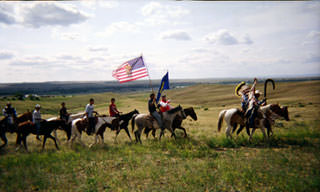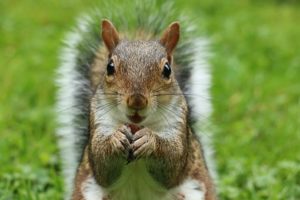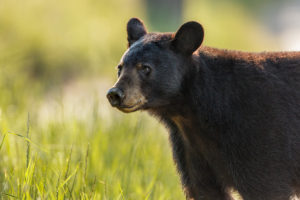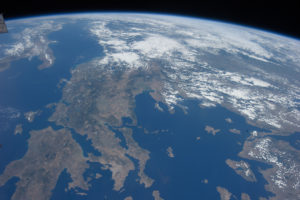The Battle of the Little Bighorn and Our War Against the Wild
Native Americans join the armed forces in the highest per capita figures of all ethnic groups in this country, defending to the end the place where they were once wild and free.Although Indians won on that day in the greasy grass, the battle was their end of days.
Letter From the West is a monthly series by Deanne Stillman that explores what is going on in our wide open spaces and what we do to one another and all that lives there.
On June 25 and 26, we marked the 136th anniversary of the Battle of the Little Bighorn. This conflict was a great victory for Native Americans — and a significant loss for the U.S. cavalry. Although Indians won on that day in the greasy grass, the battle was their end of days. It was only a matter of time before the few remaining holdouts were rounded up and sent to reservations.
In 1890, the aging holy man Sitting Bull was killed in a confrontation between his followers and Indian police who were sent to arrest him. A small band of Indians led by the elder Big Foot fled toward the Pine Ridge reservation for safety, camping by night along Wounded Knee Creek. Soon they were surrounded by soldiers who set up Hotchkiss guns on a hill overlooking the encampment. Their weapons were confiscated, a gun went off, and within minutes the band was mowed down in a gulley. At least half of the 300 were women and children. It was Christmastime and Big Foot had been flying a white flag.
Some said that Custer had been avenged, and it would be decades before discussion of the massacre at Wounded Knee erupted beyond Native American communities. But long before that happened, to seek compensation for losses incurred during the war, many members of the Lakota tribes filed a series of pony claims against the government, trying to regain some semblance of what was lost.
In the scheme of things, the vanquishing of the Indians went quickly. Within a couple of centuries, civilizations that had been on this continent for thousands of years were either entirely wiped out or rendered powerless in one way or another. It wasn’t just firepower that brought this about. There were contagious diseases that many Indians were unable to fend off. Alcoholism took hold among natives. Moreover, the Plains Indians’ primary food source — the buffalo — was exterminated. But even all of these things together — guns, smallpox, booze, starvation — were not enough to take the tribes down. There was something else. Army tacticians realized that in order to win, they had to strip the tribes of their ponies. Then, they would have no transportation, and would have to fight on foot. Beyond that, they would be spiritually broken. This latter effect, I don’t think, was consciously intended, but no matter: Once the taking of the four-leggeds was complete, it was over for the horse tribes.
“Shortly after their return to the New World,” I wrote in my book “Mustang,” “horses swept through the deserts and plains like a fast-moving secret. They partnered up quickly with Native Americans, players taking to the script with astonishing ease. From the Apache and Comanche to the Zuni to the Hopi to the Navajo to the Ute; from the Shoshone to the Flathead, Crow, and Nez Perce … horses allied with tribe after tribe, perhaps not in that exact order, but the deed was done, and by the early 1700s, it was as if their kind had never disappeared from their native turf … Like the ancient Greeks, Hebrews, and Muslims before them, Indians sang praise to the horse, but their praise was even more eloquent, with more tones and layers; in the horse they saw not only the stars, the rivers, the elements, but also the land — the very wild that was their home. His mane and tail moved like the grasses in the wind, sang the Chickasaw. His foot was like striped agate, sang the Navajo, his legs like lightning, tail like a trailing black cloud; his mane was of short rainbows, his eyes were of stars, and his teeth of white shell …”
This reverence for the animal led to a kind of horsemanship that astounded American soldiers; they came to regard the Comanche as the finest light cavalry in the world. But among the many tribes that had acquired the mustang, it was the Plains Indians who became the centaurs of the American frontier. They called the horse “sunka waken” — sacred or mysterious dog. “Dog” because it became the new pack animal, and “sacred” because it was much more than a carrier of goods. It was a hunter, a warrior, wealth and prestige; it was medicine, it was magic and, above all, it was allied with the Thunder Beings who live in the West, where rain begins. The horse culture of the Plains Indians — including the Cheyenne, Crow, Arapaho, Mandan, Blackfoot, Lakota and other tribes — lasted from about 1630 to the end of the 19th century, a short period of astonishing importance, reverberating across time and forever.
The horse takings and massacres began before the Battle of the Little Bighorn. In 1858, Col. George Wright ordered the killing of 800 ponies that belonged to the Palouse tribe of what later became Spokane, Wash. The site is now known as Horse Slaughter Camp, and it has a stone marker. On Thanksgiving night in 1868, Custer led an attack on Chief Black Kettle and his small tribe of Cheyenne, the sole survivors of the brutal Sand Creek Massacre in Colorado four years earlier, at their camp along the Washita River in Oklahoma. When the assault concluded, Custer told his scout to round up the herd of 875 ponies and mules and drive them into the smoldering village. There they were massacred, with guns and knives, and one native woman later remembered “that the wounded ponies passed near her hiding place, moaning loudly, just like human beings.”In 1869, the army defeated Cheyenne dog soldiers at the Battle of Summit Springs in Colorado, taking their 400 horses and mules. And there were other horse massacres, as if prefiguring the coming government war against the horse itself, including the assault carried out by Col. Ranald Mackenzie in 1874. During the Red River War against the Kiowa and Comanche on the Staked Plains of Texas and Oklahoma, he ordered the killing of 1,400 Indian ponies. This was one of the last threats in that region of the country. Later, Mackenzie went mad.
Paradoxically, it was a cavalry horse named Comanche, taken from the wild and pressed into U.S. Army service after the Civil War, who became known as “the lone survivor of the Battle of the Little Bighorn” — although there were many natives who fought there and lived to recount the tale. Comanche had been given his name after being wounded in an earlier battle with Comanche Indians; when soldiers removed the arrowhead in his flanks, he exhibited such stoic courage that they named him in honor of the tribe they were fighting. On the killing fields of the Little Bighorn, he stumbled out of the carnage when it was all over, suffering from a number of wounds. A soldier gave him a drink from a hat and he was taken to a nearby ferry, and then to Fort Riley where he was nursed back to health and retired with full honors. By then he had developed a taste for booze and many years later, when he died after his longtime handler was killed at Wounded Knee, he was stuffed and put on display in a series of exhibits. Finally he came to rest in the Natural History Museum at the University of Kansas — a once-wild warrior who served his country and, like many a veteran, is barely known or appreciated.
In 1891 and ’92, as the Indian wars were coming to a conclusion, a series of requests known as the Sioux pony claims were filed in court. These were in response to the seizing of horses by military authorities from members of the Red Cloud and Red Leaf bands of Sioux Indians at Camp Robinson, Neb., and at the Standing Rock and Cheyenne River agencies in 1876, around the time of the Battle of the Little Bighorn when Indians were being forced to “come in” and give up their horses. The list of claims is a sad litany of that era and a backbeat for what continues today. Alphabetically arranged, it tells us that dozens of tribal members including Afraid of Bear, Bad Woman, Iron Jaw, Keeps the Battle, Little Bear, Lone Wolf, Plenty Arrows, Rock Man, Walks by Day and White Horse Woman filed claims for varying numbers of ponies, from one or two to 20 or 30. Not all claims were allowed, many were reduced and, in the end, they were paid out for paltry sums.
By the end of the 19th century, the tribes had been vanquished and the range was closed. With the advent of the train and then the car, the horse was no longer needed and it became a cash crop. There were about 2 million mustangs on the range then and a period of massive roundups ensued, with hundreds of thousands of wild horses being harried by mounted men, fixed-wing aircraft and later men in trucks toward their doom, shipped off to rendering plants or to war fronts in foreign lands. So many horses were taken then that the first part of the century became known in certain circles as the time of “the great removal.”
The voracious horseflesh industry was finally slowed down in the 1950s when a woman who came to be known as Wild Horse Annie embarked on a 20-year-long campaign to save wild horses after seeing blood pouring out of a truck as she headed to work in Nevada one day, and learning that it was carrying injured and dying mustangs bound for a remote slaughterhouse. By 1971, her battle culminated in passage of the Wild Free-Roaming Horses and Burros Act, which has been circumvented in many ways over the years. At the time, there were probably about 54,000 wild horses left on the range, although the number is disputed. Since then, the population has dwindled, with a limited number of mustangs in protected areas at any given time subject to often cruel government-sanctioned roundups that are not always based on accurate census counts and sometimes happen for reasons such as the ongoing drought, even though no other wild animals are ever removed from the range in order to give them a drink. With civilization closing in, America’s mustangs are running for their lives in a drama that echoes the final stages of the Indian wars. In fact, once the Native American was no longer a threat and the buffaloes were gone, attention was focused on the one animal that most represented freedom.A few years ago, I visited the Little Bighorn battlefield. I was there to pay tribute to Comanche and the park’s little-known horse cemetery. Along with something else that unfolded at the same time, I found myself amid something so big and so mysterious and shattering that I don’t think I’ll ever recover. “On the way into the battlefield,” I recounted in “Mustang,” “there was a long line of Indians on war ponies. They were in breechcloths and some wore feathered war bonnets and were barefoot. They rode horseback, and their beautiful compact ponies were painted with symbols — one had red circles around the eyes and nostrils for vision and sense of smell; another had a pair of red thunder stripes on the forelegs to please the god of war …
“The Native American memorial — or circle of unity, as it’s called — was a large sunken circle with a weeping wall of stone ringing two-thirds of its circumference, lined with plaques honoring the Indians who fought Custer. Along an outer perimeter, there was an iron-cable sculpture of Indian warriors on galloping horses; you can look through it, across the battlefield and all the way to the horizon. A visitor had tied some ceremonial feathers to the sculpture, adding to the scarves and strings of beads and small American flags that rippled in the stiff prairie breeze. A cloud of dust rose from the south, and the Indians on their ponies raced across the field, shouting war cries. They had been traveling for ten days, leaving from reservations in South Dakota, making their way to the canyon where Crazy Horse had carved a petroglyph on his way to the battlefield, and then resuming their ceremonial ride.
“Just outside the circle, they stopped, forming a line of horses that separated now from then. As they stood in for their ancestors, a powwow circle came together inside the shrine, and Sioux and Cheyenne tribesmen beat their drums and sang songs of war, and native warriors across several generations stepped into the circle and surrounded the men pounding their drums. There were veterans of World War II, the Korean War, the war in Vietnam, the Gulf War, all dressed in their army fatigues or Marine finest, and wearing war bonnets or feathers in their military caps — fighters all, men and women whose ancestors fought for the Horse Nations and who themselves fought in twentieth and twenty-first century wars for the nation that had conquered them.
“With the war ponies flanking the memorial circle, the sun rising higher in the east, and the powwow drummers and singers chanting for the ages, two Indians joined the circle, and the drums and singing stopped. One of them was Donnie Red Thunder, a former Navy SEAL and great-great-grandson of Crazy Horse. He had traveled the 365 miles from the Cheyenne River camp in South Dakota on horseback. ‘We’re the only country that can say they defeated the United States,’ he said, referring to the Battle of the Little Bighorn. ‘Indians.’ “
With the 136th anniversary of this battle just passed, let us pay tribute to the Native American soldiers who served their tribes that day, their country, after all. Like the T-shirt says — the one with Geronimo and three other armed warriors — they are the “original homeland security, fighting terrorism since 1492.” That’s a funny line but all too true; Native Americans join the armed forces in the highest per capita figures of all ethnic groups in this country, defending to the end the place where they were once wild and free, like the four-legged that carried them to their greatest glory. Yet our war against what’s wild continues. The animal tribes are purged, the land is shredded, rivers are sucked dry to make ice sculptures in Vegas. It’s the endgame of what that started many moons ago, and the pony claims are mounting.
Your support matters…Independent journalism is under threat and overshadowed by heavily funded mainstream media.
You can help level the playing field. Become a member.
Your tax-deductible contribution keeps us digging beneath the headlines to give you thought-provoking, investigative reporting and analysis that unearths what's really happening- without compromise.
Give today to support our courageous, independent journalists.






You need to be a supporter to comment.
There are currently no responses to this article.
Be the first to respond.